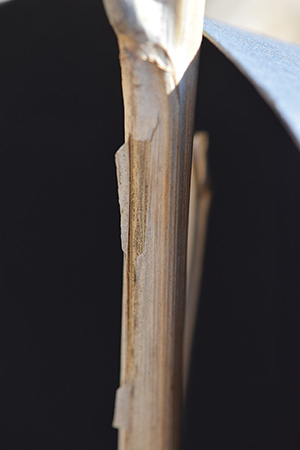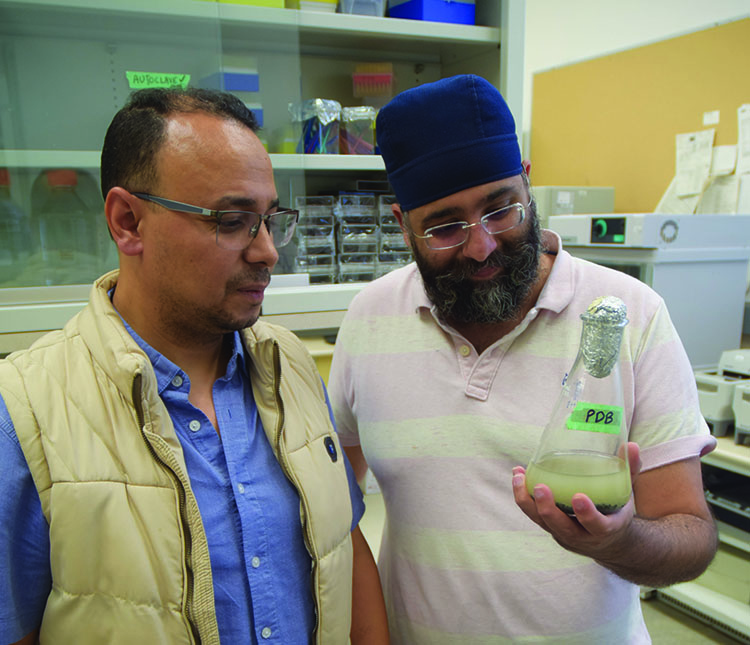Much needed verticillium stripe research
Canola growers need proven methods to manage verticillium stripe in canola. Four new grower-funded studies will help.
My main concern is that verticillium stripe may be secretly robbing more yield than people know,” says Breanna Miller, agronomy specialist with the Canola Council of Canada.

Canola growers understand the rising concern that is verticillium stripe. Unofficial disease scouting reports suggest the disease took another step toward blackleg and sclerotinia stem rot status in 2024. Sensing the need for better understanding of the disease and management options, canola growers funded four new verticillium stripe research projects in their 2024 Canola Agronomic Research Program (CARP). CARP is funded by the three provincial canola grower organizations – Alberta Canola, SaskOilseeds and the Manitoba Canola Growers – and administered by the Canola Council of Canada. Western Grains Research Foundation (WGRF) also contributed.
Verticillium is common in rapeseed in Europe, but our knowledge of its activity in Canadian canola plants and the Prairies environment are limited. “If we are to increase canola production on the Prairies, we need to manage the diseases that can steal yield away from us,” says Chris Manchur, Canola Council of Canada agronomy specialist. “Current verticillium stripe research will help us identify these solutions and set our industry on the right path towards sustainable production.”
Miller adds that best practices, especially the option to use resistant cultivars in fields with virulent verticillium isolates, will be a big help. “The industry is working on finding those resistant genes in new and current cultivars,” she says.
These four new projects will help.
Harmeet Singh Chawla with the University of Manitoba is a lead investigator for “Comparative analysis of Verticillium longisporum lineages in the Canadian Prairies: Safeguarding canola production,” one of the four studies.

Chawla was a graduate student in Germany before coming to Canada. While in Germany, he worked on verticillium research in partnership with big German rapeseed breeding companies. He used bioinformatics to sequence the DNA of V. longisporum, the pathogen. He confirmed that the V. Longisporum group A1/D1 was really the only virulent group, and that within that group were many different isolates, or races.
A1/D1 also dominates in Canada. Part of Chawla’s project is to identify the more aggressive isolates within that group. The project will then create markers for those isolates, which test labs can use to qualify the virulence level of races found in a field. Canola breeders could also use that information to select for cultivars with resistance to these most virulent isolates.




